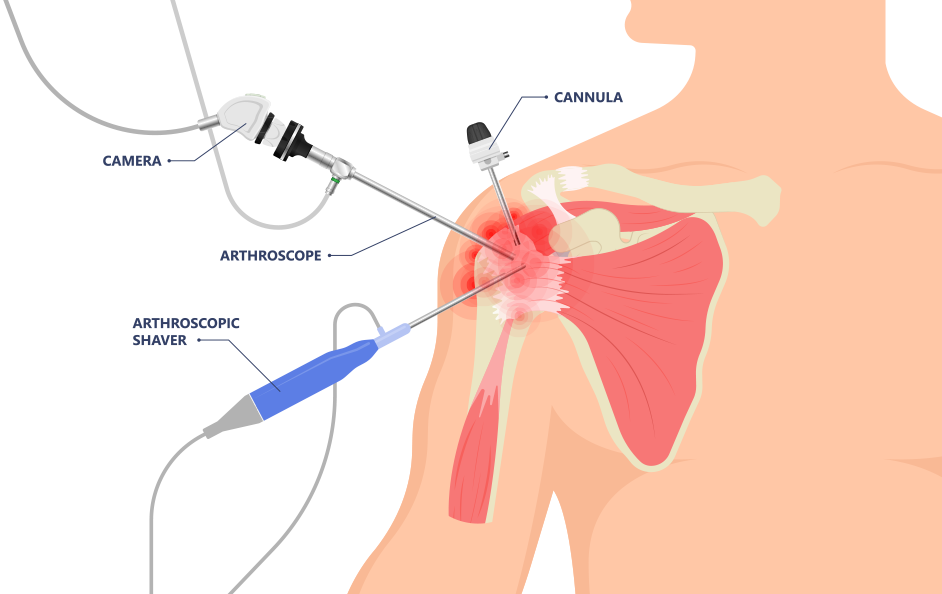It is an operation usually performed under general anaesthesia.
A small camera is placed into the joint through a small incision. This allows the tissues of the shoulder to be examined and/or repaired.
To do a repair, an additional 3-4 small incisions may need to be made.

This involves repair of torn tendons with sutures and suture anchors placed into the bone.
The cause of a frozen shoulder is not completely understood. It is associated with a number of medical conditions including diabetes, thyroid disease, heart disease, and Parkinson’s disease.
The cause of a frozen shoulder is not completely understood. It is associated with a number of medical conditions including diabetes, thyroid disease, heart disease, and Parkinson’s disease.

After the procedure, you will usually need to wear a sling. This may be for 6 weeks if you have a tendon repair performed.
Your expected recovery will vary from 1 to more than 6 months – depending on the type of procedure done.
Physiotherapy is usually required to help regain your range of movement, strength and co-ordination.
These notes have been prepared by orthopaedic surgeons at OrthoSport Victoria. They are general overviews and information aimed for use by their specific patients and reflects their views, opinions and recommendations. This does not constitute medical advice. The contents are provided for information and education purposes only and not for the purpose of rendering medical advice. Please seek the advice of your specific surgeon or other health care provider with any questions regarding medical conditions and treatment.
If you are looking to book an appointment, please call us on